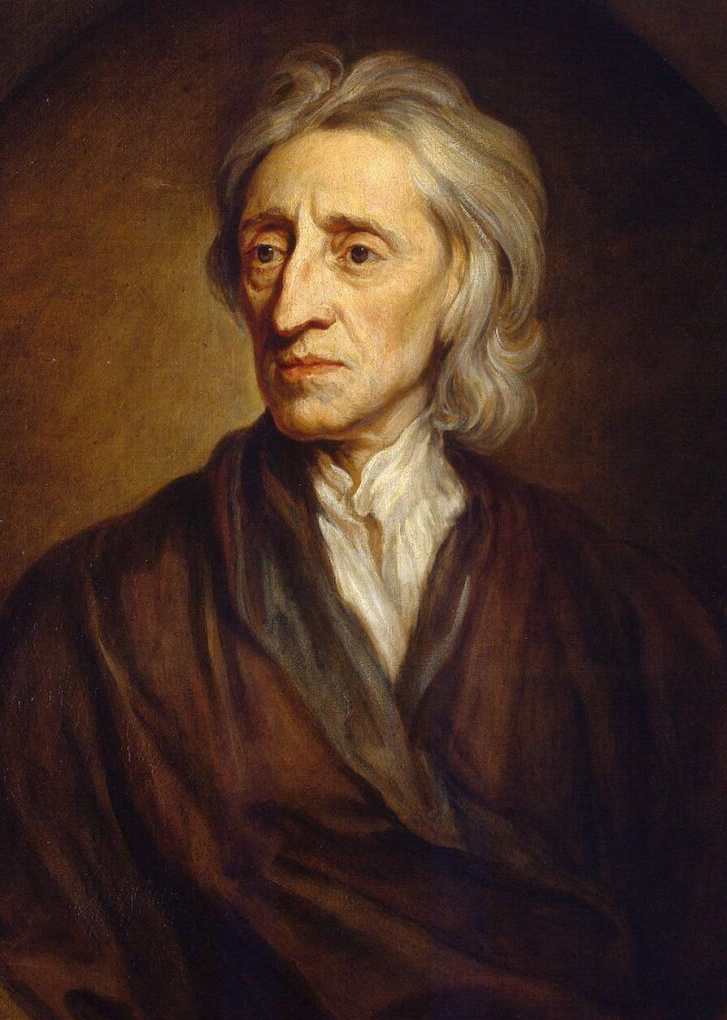Mary Shelley’s Frankenstein and Walt Whitman’s Leaves of Grass offer overlapping yet contrasting views of humanity through their exploration of human potential. While Shelley emphasizes the importance of nurture to the development of morality, and the potential for good inherent in the unmolded being, she places limitations on a being’s potential– in order to become good, a being must be accepted by other beings, which, in the case of Frankenstein’s creature, proves impossible. Whitman, however, rejects these limitations on human sympathy, discarding labels of good and evil and asserting the plasticity and moral potential of all beings.
For centuries, philosophers have debated what causes a person to be good or evil. Philosopher Thomas Hobbes believed that humans in their natural state are “bad” and in a state of war, and that through civilization some are shaped into good people. On the other end of the spectrum of theories of human nature, 18th century Philosopher Jean Jacques Rousseau saw humans as intrinsically moral and compassionate, and blamed evil on the corruption of society. To Rosseau, the person unshaped by society was a “Noble Savage”, driven by an innocent desire to help others. Falling somewhere between the philosophies of Hobbes and Rousseau, John Locke described the natural state of nature as a kind of neutral chaos. According to Locke, humans are born neither good nor bad, but are like unmolded clay, or a tabula rasa– blank slate. Locke’s theory attributes unlimited potential to the newborn infant untouched by society.

In Frankenstein, Mary Shelley draws on the traditions of Locke and Rousseau, depicting evil as primarily the result of corruption by society. This perspective is best represented by the character of Viktor Frankenstein’s creature, who is initially compassionate towards humans, and desires their affection and acceptance. While living in his hovel on the DeLacey’s property, he admires the “gentle manners”(Shelley 128) of the family, and is “deeply affected”(Shelley 129) by their unhappiness. Yet, following the rejection of the DeLacey family, and his inability to find a human who is sympathetic to his form, the creature rejects humanity. Shelley emphasizes the creature’s initial capacity for good through descriptions of his altruistic actions for the DeLacey’s– collecting firewood and performing other chores– and his childlike and Romantic descriptions of the natural world.
The creature’s first experiences with fire are symbolic of the potential of the unshaped human life that Shelley depicts. Approaching a fire, the creature notices its pleasant warmth. Yet when he puts his hand to the fire, he cries out in pain, and remarks, “How strange…that the same cause should produce such opposite effects”(Shelley 120)! The fire’s potential to produce both joy and pain mirrors the potential of the human for both good and evil. Applying this metaphor to the creature’s trajectory, one could say that he initially is pleased by human society’s outward appearance of warmth. Yet once he metaphorically puts his hand to the fire of humanity, revealing himself to the DeLacey’s, he is met with pain and rejection, and learns to hate humanity.
Though Shelley demonstrates the creature’s potential for good before he attempts to enter human society, she emphasizes that this potential is restrained by the limitations of human sympathy. According to Scottish Enlightenment era Philosopher David Hume, sympathy arises from resemblance, and the human drive for pleasure. In order to sympathize with another person, we must view some resemblance to ourselves in them, or gain pleasure in beholding them, as we might with a very beautiful person. The physical form of Frankenstein’s creature does not closely resemble that of a human, and is repulsive to those he meets. The creature states that he is “endued with a figure hideously deformed and loathsome”, and is “not even of the same nature as man”(Shelley 141). Despite his efforts, the creature is unable to find lasting sympathy from a single human, as every person he meets runs at the sight of him. He comes close to gaining Mr. DeLacey’s sympathy, because DeLacey is blind, and the creature is able to elicit his compassion through speech– until DeLacey’s family returns home. Similarly, the creature, through his eloquent speech, is able to convince Viktor to make him a companion. It is when Viktor looks up from his work to see the “ghastly grin”(Shelley 203) of the creature at his window that he destroys the companion. Once again, it is the creature’s physical deformity that obstructs him from the sympathy of others. Thus, Shelley comments on the limitations of sympathy and of human potential. The unlimited potential that she attributes to the unmolded person is contingent upon the person’s ability to evoke sympathy, and thus, their resemblance to others. Through this logic, we see that the creature never had a chance to be “good” after his creator, the person most likely to see past his appearance, rejected him. Without the sympathy that his physical appearance prevented him, his moral potential was diminished.
Similarly, Viktor’s potential is limited by his own failure to evoke sympathy, caused not by his appearance but by his temperament and fixation on the study of life and death. Shelley frequently separates Viktor from the rest of humankind. Viktor describes himself as “the shadow of a human being”(Shelley 225), and says of a refreshing sleep, “I again felt as if I belonged to a race of human beings like myself”(Shelley 203). Through these descriptions, Shelley draws a parallel between Frankenstein and his creature, both of whom suffer an inability to connect with humankind. The limitations of human sympathy drive Viktor, without companion at Ingolstadt, to “attempt the creation of a being like [him]self”(Shelley 53); it is these same limitations the cause Viktor to reject the ugly visage of his creation. Through Viktor’s character, Shelley again emphasizes the limitations on the human capacity for good or evil– perhaps, due to their lack of resemblance to their peers, both Viktor and his creature lost the ability to do the good that they would have been capable of, had they had the sympathy of others.
In contrast to Shelley’s view of human potential as expansive, yet limited by the failures of human sympathy, Whitman’s view of human potential in Leaves of Grass is unbounded by sympathy. Whitman, writing during the Transcendentalist Movement, builds upon the traditions of Locke and Rousseau to depict human potential as more vast than even Locke’s “Tabula Rasa” . Whitman depicts humans, and all of nature, as full of potential, similar to Locke’s unmolded infant. Like the infant, all of humanity has the potential for good or bad, but the person themself has no innate or static moral valence.
While Shelley emphasizes the ability of society and sympathy to shape a person towards good or evil, Whitman rejects these categorizations of good and evil outright, writing, “what blurt is it about virtue and about vice? Evil propels me, and reform of evil propels me . . . . I stand indifferent”(Whitman 31). Similarly, in the poem “Starting from starting from Paumanok”, added to a later edition of Leaves of Grass, Whitman writes, “I am myself just as much evil as good, and my nation is—and I say there is in fact no evil”(Whitman 16). These statements seem somewhat contradictory: Whitman states that he is both evil and good, but also that there is no such thing as evil. Through this contradiction and implication of being both everything and nothing simultaneously, Whitman underlines the vastness of human potential. Whitman’s contradictions suggest an ability to live multiple realities simultaneously, an idea which he expands upon throughout his poetry.
Whitman references “the murder in cold blood of four hundred and twelve young men”(Whitman 43), yet refrains from making any moral judgment, because, as he later writes, “what is called good is perfect, and what is called sin is just as perfect”(Whitman 69). While Whitman’s belief that every person and thing is “perfect”(Whitman 69) and in its place untethers human potential from the constraints of good and evil, it also limits the human potential for change and social progress. His assertion that the condition of a slave, for example, is perfect and no worse than the condition of a free man or woman, implies that people exist to perform certain roles in life, and are thus limited in potential to their own station. Yet Whitman continually emphasizes the potential inherent in all things, human and nonhuman. In “Song of Myself”, he writes about a child who asks him about the meaning or purpose of the grass on the ground. In some editions, Whitman responds, “I guess it must be the flag of my disposition”(Whitman 20), while in others, he responds, “I guess it may be the flag of my disposition”. The cautiousness of his response, using the words “guess” and “may”, emphasizes that the grass in fact has the potential to be something other than “the flag of [his] disposition”(Whitman 20). Considering Whitman’s usually bold tone and strong assertions, the uncertainty of his response is significant. In addition, Whitman’s willingness to amend wording, add poems, and edit heavily across editions of Leaves of Grass indicates a concept of the written or published word as similarly full of potential and receptive to change.

Thus, like his take on good and evil, Whitman’s view of potentiality is rather contradictory, as he simultaneously asserts the unlimited potential of all things and the “perfectness” of each thing which exists in its place. For Whitman, the vast potential of all things seems to lie in the shared experience of life and humanity which allows us– or so he asserts– to inhabit multiple perspectives. He describes “the lifted sick…martyrs…the mother condemned for a witch and burnt with dry wood, and her children gazing on…[and] the hounded slave,” and writes, “all these I feel or am”(Whitman 42). This suggested ability to “be” others suggests a view of human sympathy that starkly contrasts with Shelley’s. To Shelley, human potential is limited by the failures of sympathy, and our inability to sympathize with those who do not resemble us. Whitman, however, suggests that we can throw off the bonds, or “rules”, of human sympathy, and sympathize with even the most debased creatures.
Frankenstein and Leaves of Grass ultimately offer conflicting assessments of human potential and its pitfalls. While Shelley sees the unmolded human as capable of good or evil, and depicts the impact of our actions and surroundings on our journey down one path or the other, she emphasizes that the failures of human sympathy limit one’s potential, and in a sense predestine the being rejected by humanity for evil. In contrast, Whitman rejects the idea that human sympathy is limited. To Whitman, the resemblance that sympathy requires is simply the shared experience of life or existence. All beings and objects resemble each other by their mere existence, thus sympathy has no limits. Yet Whitman’s acceptance of the status quo, and his apathetic equalization of all conditions of life is, perhaps unintentionally, limiting. He preaches complete satisfaction with life, and implies that this satisfaction should be shared by all beings, thus indirectly discouraging social progress and the potential for a person to change the unsatisfactory conditions of their life.
Works Cited
Shelley, Mary Wollstonecraft, et al. Frankenstein. Oxford University Press, 2008.
Whitman, Walt, and Lawrence Clark Powell. Leaves of Grass: Poems of Walt Whitman. T.Y. Crowell, 1986.
Whitman, Walt. Leaves of Grass. 1855.

Love how you tied Frankenstein to the enlightenment- I hadn’t thought of it that way before! Interesting piece!
LikeLike